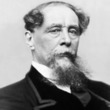Treasure Island, with eBook
(Libby/OverDrive eAudiobook)
Author
Contributors
Published
Tantor Media, Inc , 2008.
Status
Available from Libby/OverDrive
Available Platforms
Libby/OverDrive
Titles may be read via Libby/OverDrive. Libby/OverDrive is a free app that allows users to borrow and read digital media from their local library, including ebooks, audiobooks, and magazines. Users can access Libby/OverDrive through the Libby/OverDrive app or online. The app is available for Android and iOS devices.
Description
Young Jim Hawkins lives a quiet life as the son of an innkeeper. This all changes when an ancient sailor takes up lodging at the inn. Jim is both horrified and fascinated by the captain's bloody stories. But when the old man dies without paying his bill, Jim must search the sailor's one possession, a large sea chest, for payment. In doing so, he unknowingly pockets an old map from the chest. But Jim is not the only one interested in the sea chest, and he has to flee when a group of cutthroats shows up to ransack the few possessions of the old sailor.The family doctor recognizes the map as the key to a fortune, which commences a Caribbean treasure hunt. With the pirates only steps behind, Jim races to reach Treasure Island. Seventeen set sail, but how many will return? Complete with peg-legs, parrots, pieces-of-eight, and the original Long John Silver, this novel launched Stevenson on his long and fascinating writing career and marked the beginning of the pirate genre.
More Details
Format
eAudiobook
Edition
Unabridged
Street Date
07/28/2008
Language
English
ISBN
9781400128471
Also in this Series
Checking series information...
Reviews from GoodReads
Loading GoodReads Reviews.
Citations
APA Citation, 7th Edition (style guide)
Stevenson,Robert Louis., & Prichard, M. (2008). Treasure Island, with eBook (Unabridged). Tantor Media, Inc.
Chicago / Turabian - Author Date Citation, 17th Edition (style guide)Stevenson,Robert Louis and Michael Prichard. 2008. Treasure Island, With EBook. Tantor Media, Inc.
Chicago / Turabian - Humanities (Notes and Bibliography) Citation, 17th Edition (style guide)Stevenson,Robert Louis and Michael Prichard. Treasure Island, With EBook Tantor Media, Inc, 2008.
Harvard Citation (style guide)Stevenson,Robert Louis. and Prichard, M. (2008). Treasure island, with ebook. Unabridged Tantor Media, Inc.
MLA Citation, 9th Edition (style guide)Stevenson,Robert Louis, and Michael Prichard. Treasure Island, With EBook Unabridged, Tantor Media, Inc, 2008.
Note! Citations contain only title, author, edition, publisher, and year published. Citations should be used as a guideline and should be double checked for accuracy. Citation formats are based on standards as of August 2021.
Copy Details
| Collection | Owned | Available | Number of Holds |
|---|---|---|---|
| Libby | 2 | 2 | 0 |
Staff View
Loading Staff View.





































